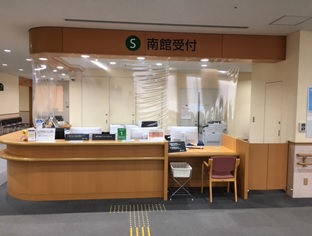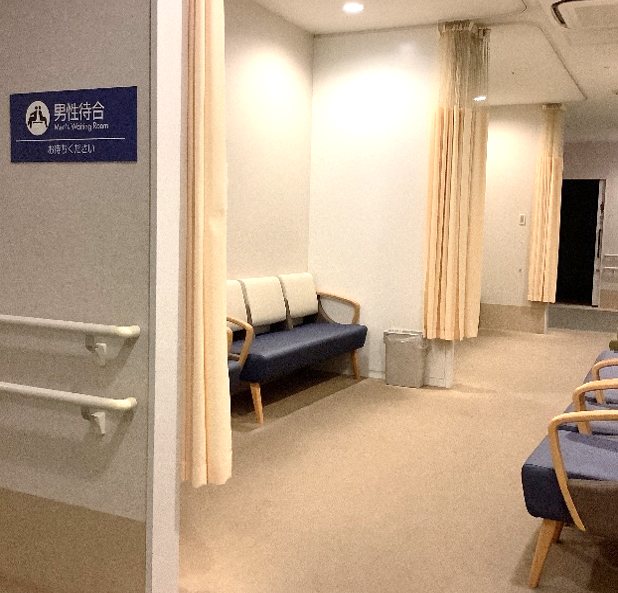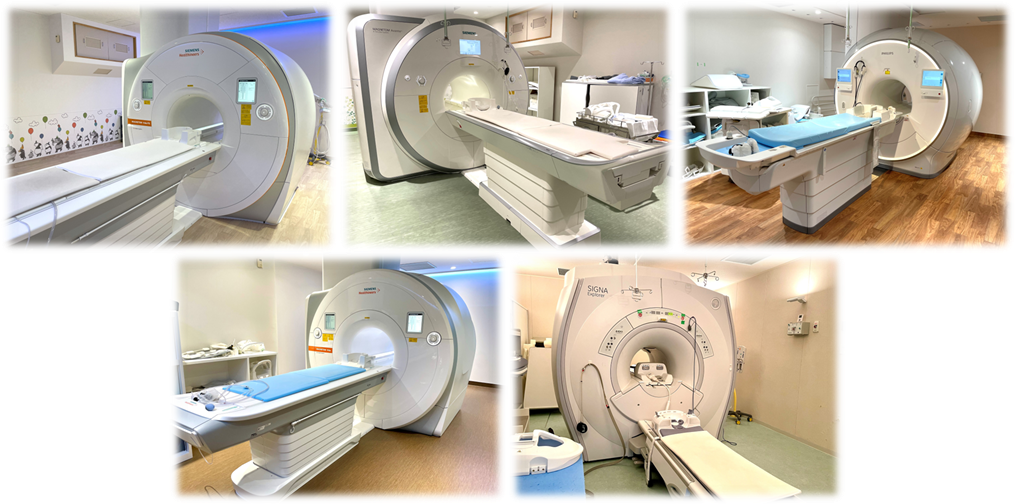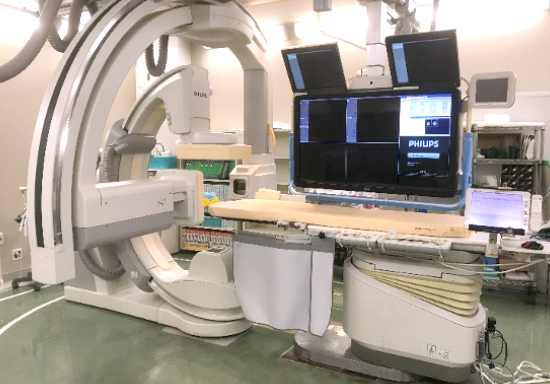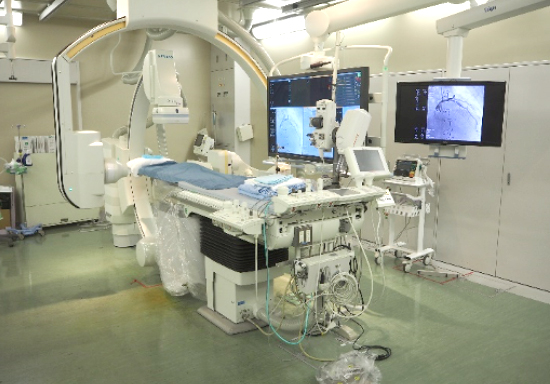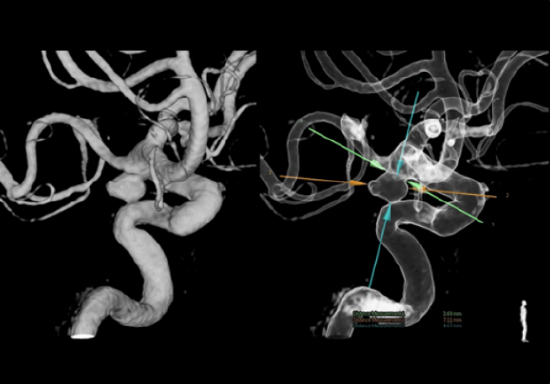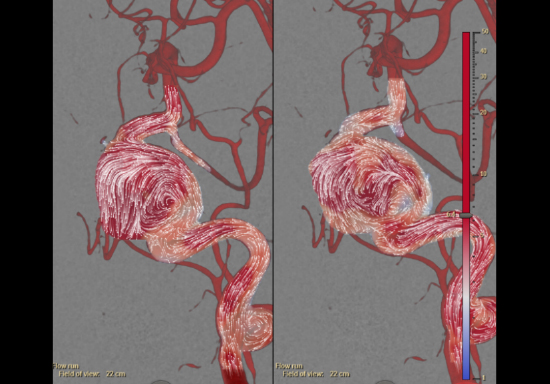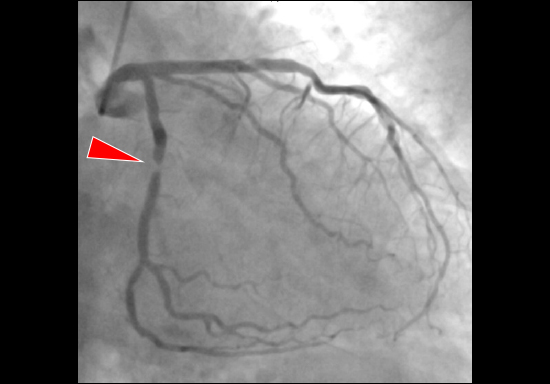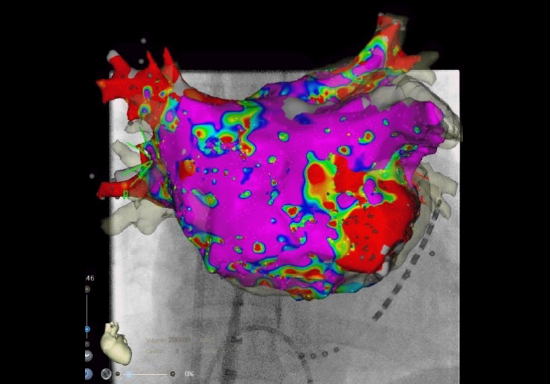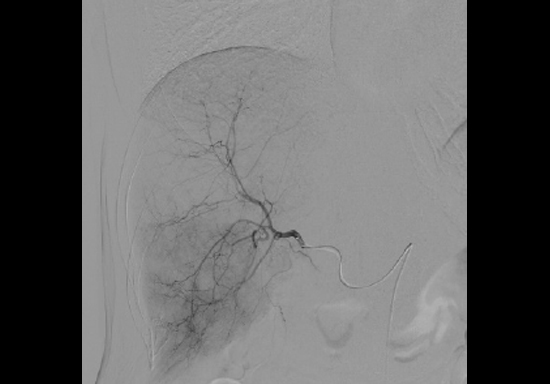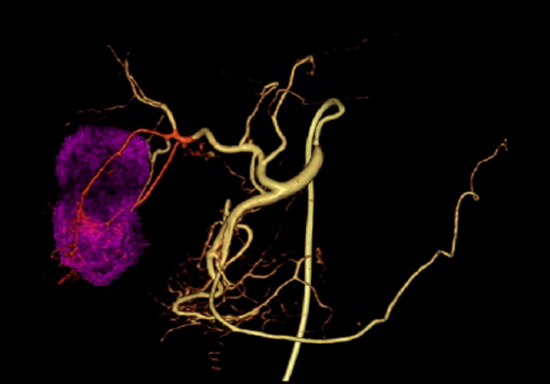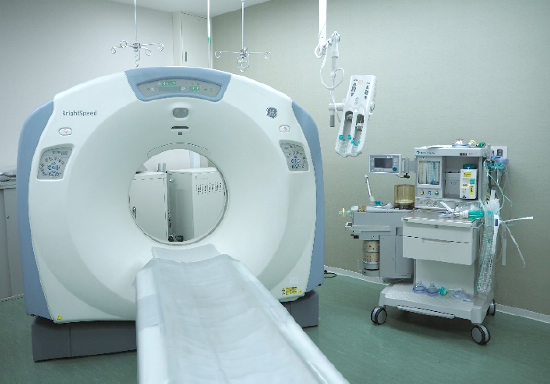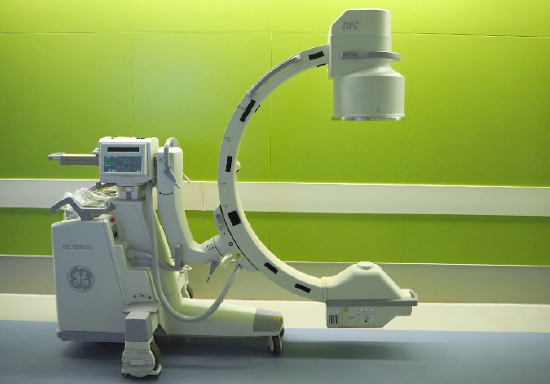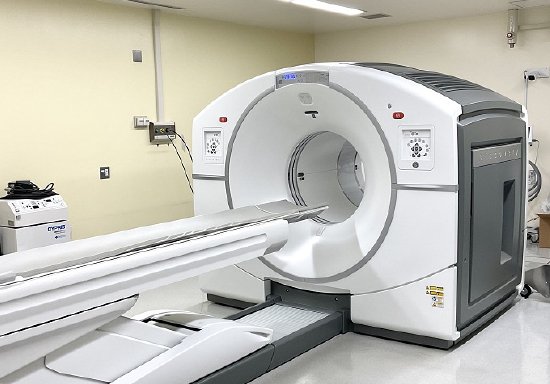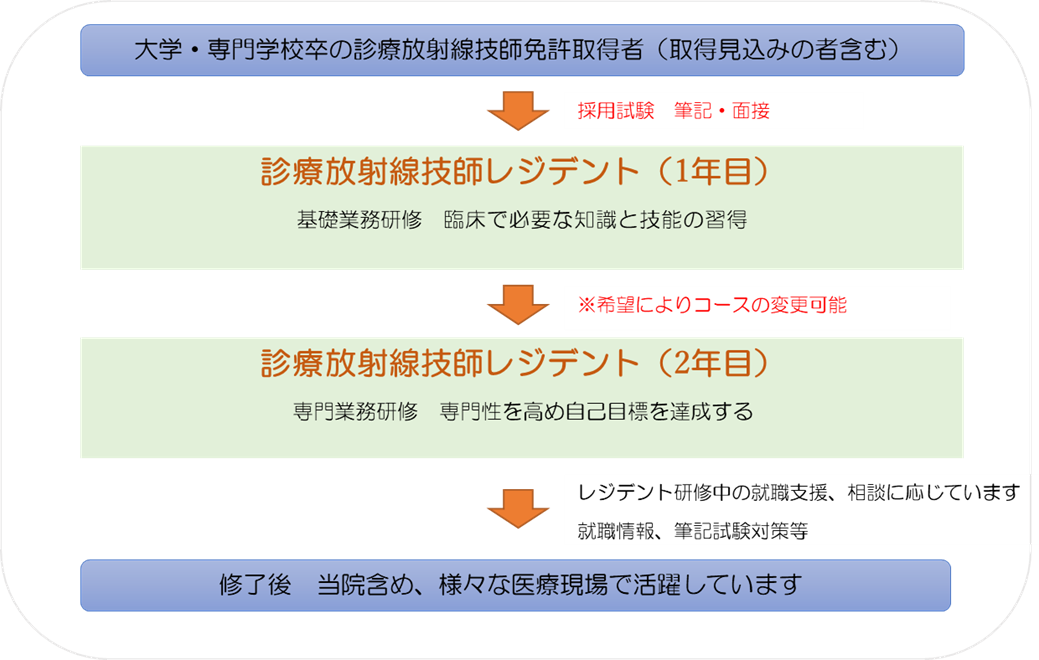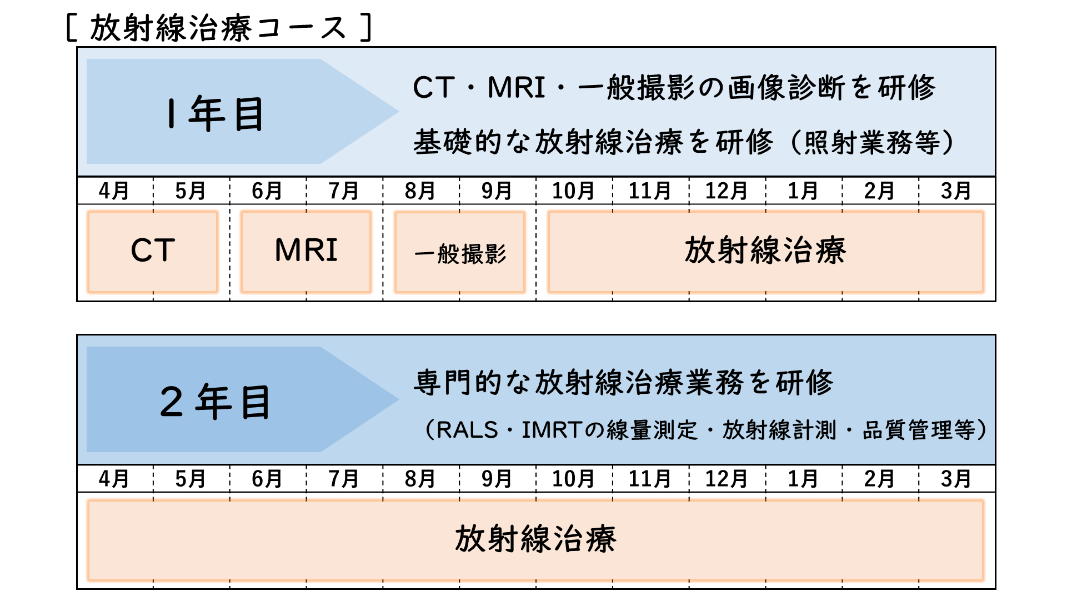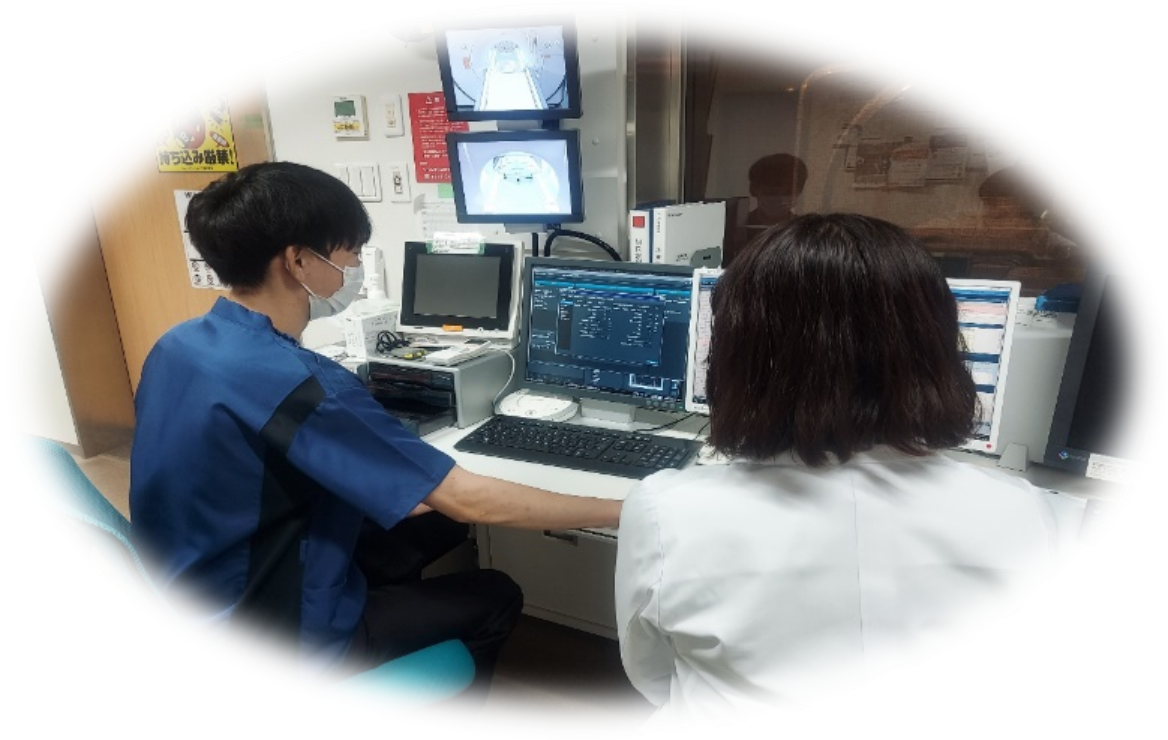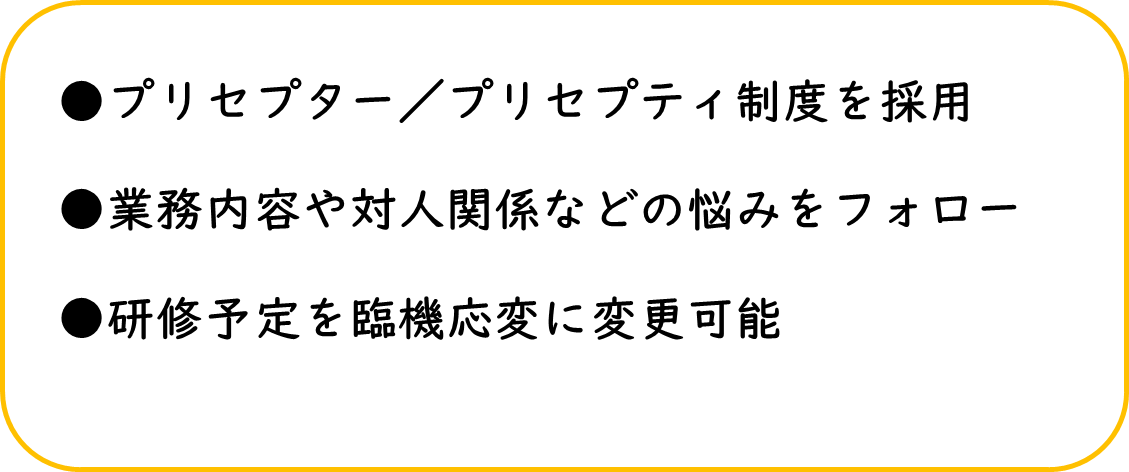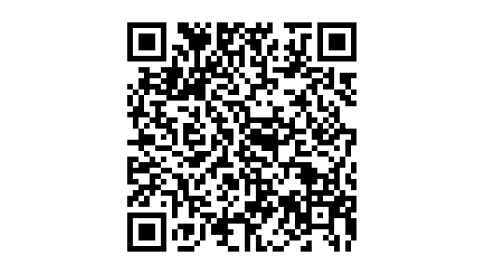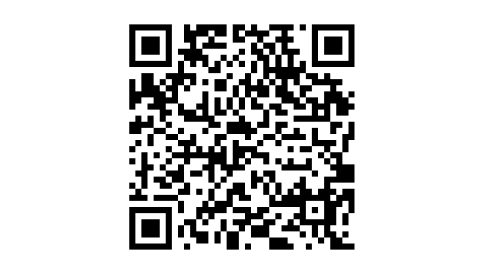Radiological Technology
In recent years, great expectations have been placed on the fields of diagnostic imaging and radiotherapy in the medical field. We provide advanced medical technology more quickly and accurately by acquiring various specialties and certifications. In addition, with regard to medical radiation exposure, we conduct patient-friendly and safe examinations with appropriate medical exposure doses based on specialized knowledge and information. Based on the basic policy of "Aiming to improve patient services by enhancing medical functions and ensuring safety management," we would like to strive to improve medical functions and ensure safe and reliable business operations.
In addition, as the last bastion to protect the lives and health of citizens, we are proud to be a department that supports the foundation of our hospital, which provides advanced medical care 24 hours a day, 365 days a year. I would like to be able to operate it properly. The radiology department is an advanced department with many advanced medical equipment, but I would like to keep in mind the heart of a medical professional and strive to provide medical care that sincerely faces patients.
Radiological Technology staff
| Position | Full name |
|---|---|
| chief engineer | Takeharu Ibaraki |
| Deputy chief engineer | Satoshi Yotsui |
| Assistant chief engineer | Tatsuya Fukui |
| Assistant chief engineer | Hiroshi Nakano |
| staff | |
| Radiological technologist (excluding positions) | 54 people |
| Radiological technologist resident | 3 people |
| Engineering Department 1 (general radiography, TV, CT, MRI) | 27 people |
| 2nd Technical Department (Angiography/Operating Room/Emergency) | 10 people |
| 3rd Technology Department (Radiation Therapy/Nuclear Medicine/PET) | 17 people |
Instructor/Professional/Certified/Certified/Radiological Technologist
| name | Number of people | Related academic societies, etc. |
|---|---|---|
| First Class Radiation Protection Supervisor | 17 people | National qualification |
| Class 1 Working Environment Measurement Expert | 1 person | National qualification |
| Radiation equipment manager | Five people | Certified by the Japan Radiological Technologists Association |
| Radiation manager | Five people | |
| Medical image information quality control specialist | 2 people | |
| clinical practice teacher | 8 persons | |
| Surgery support certified radiological technologist | Five people | |
| Disaster support certified radiological technologist | 2 people | |
| Ai certified radiological technologist | 3 people | |
| medical physicist | Five people | Japan Society of Medical Physics |
| Radiation therapy medical physicist | 2 people | |
| radiation therapy quality control | 3 people | |
| Radiological technologist specializing in radiotherapy | 8 persons | Japanese Society for Radiation Oncology |
| Nuclear medicine specialist | 1 person | The Japanese Society of Nuclear Medicine |
| Medical Image Information Technician | 1 person | Japan Society of Medical Informatics |
| Radiological technologist specializing in angiography and intervention | 4 people | Japanese Society of Radiological Technology |
| Screening mammography certified radiological technologist | 12 people | Japanese Association for Breast Cancer Screening |
| Emergency photography certified technician | 11 people | Japanese Association for Acute Medicine |
| Certified X-ray CT Technician | 13 people | Japan X-ray CT Professional Technician Certification Organization |
| Lung Cancer CT Screening Certified Technician | 4 people | Japan CT Screening Society |
| Magnetic Resonance (MR) Certified Technician | 3 people | Japanese Society for Magnetic Resonance in Medicine |
| medical information technician | 3 people | Japan Society of Medical Informatics |
| Report Confirmation Manager Qualified Technician | 2 people | Japan Hospital Management Organization |
| Hygiene Engineering Hygiene Supervisor | 3 people | Central Industrial Accident Prevention Association |
<Technical Department 1> General radiography, TV, CT, MRI
general photography

mammography

Bone mineral determination
A test that uses X-rays to measure bone density. At our hospital, we use the DEXA method, which is the most reliable measurement method, instead of a simple measurement method. It is mainly measured at the lumbar spine and proximal femur. The measurement results are used for the diagnosis and follow-up of osteoporosis and treatment decisions. This inspection supports fax reservations.
Our hospital's TV and endoscopy department operates two C-arm type digital X-ray TV systems and three other X-ray TV systems. All equipment is equipped with a system equipped with an FPD (Flat Panel Detector), and we are working to improve image quality and reduce radiation exposure. By owning multiple units, we are able to respond flexibly to inspections and strive for efficient operation. In addition, we can handle emergency examinations and treatments 24 hours a day, 365 days a year.
The C-arm type digital X-ray device with a large monitor shown in the photograph is mainly used for examination and treatment of the liver, gallbladder, and pancreatic region by Gastroenterology such as ERCP and PTCD. In addition, bronchoscopy by Respiratory Medicine, myelography by Orthopedic Surgery, and three other TV fluoroscopes are used for examination and treatment by Urology, surgery, radiology and general medicine.
What is a CT scan?
CT (Computed Tomography) is an imaging method that obtains sliced images of the inside of the body by applying X-rays to the body placed in the center of the device and analyzing the transmitted X-ray information with a computer. . It is possible to capture a wide range of images in a short period of time, and from the captured data, cross-sections in various directions can be cut out and 3D images can be created.
In addition, by injecting a drug called "contrast agent" into the vein and taking pictures, it is possible to obtain more detailed information such as blood vessels and lesions.
CT equipment in our hospital
| main building |
|
|---|---|
| South building |
|
The 320-slice ADCT performs approximately 1,500 coronary artery CT scans annually, providing image support for ablation, TAVI, and bypass surgery.
In addition, dual energy CT provides images with more information than regular CT examinations and conducts examinations with a small amount of contrast agent.
Inspection notes
If any of the following applies to you, please consult your doctor in advance.
CT examination in general
- Those who are pregnant or may be pregnant
- Those using a cardiac pacemaker or implantable cardioverter-defibrillator (ICD)
When performing a contrast examination
- Those who have had an allergy to iodinated contrast agents in the past
- Those who are undergoing treatment for bronchial asthma or those who have used asthma drugs within 3 years
- Those with serious heart, liver, or kidney damage
- Those with iodine hypersensitivity and hyperthyroidism
For those who can undergo an imaging examination
Contrast enhancement is the use of a contrast agent to improve the contrast between tissues and increase the amount of information in the image. It also makes it possible to clearly visualize blood vessels and tumors. The contrast medium is injected into a vein such as the arm. You may feel hot during the injection, but this is due to the nature of the medicine, so there is no need to worry.
Contrast agent allergy
- Contrast allergy can range from sneezing, rashes, itching, and nausea to shock symptoms. Please let us know immediately if anything changes. In addition, symptoms may appear after some time has passed since the examination, so in that case, please contact our hospital.
Precautions for Contrast Imaging
- In order to undergo a contrast agent test, blood collection data (eGFR) that examines kidney function within 6 months from the test date is required. This is because the contrast medium is excreted through the kidneys, and patients with remarkably low renal function may be changed to simple examinations that do not use contrast medium.
- The contrast agent is excreted in urine. After the examination, be conscious and drink plenty of water.
- Patients taking biguanide antidiabetic drugs should stop taking them for about 2 days after the test.
- At our hospital, there are no restrictions on breastfeeding after an imaging test, but if you have any concerns, please contact your doctor.
Inspection flow
~Reception~
| main building | 1st floor “F Imaging Medicine Reception” |
|---|---|
| South building | 2F "S South Building Reception" |
Note) If you have been instructed to come to the hospital, please come at the time as instructed.
If blood sampling data is required before the CT examination and there is an instruction for blood sampling, please collect blood at least 1 hour before the appointment time.
In addition, if a patient undergoing cardiac examination is instructed to decide on the presence or absence of drugs to suppress heartbeat on the day of the examination,
Please come at least 1 hour before your reservation time.
~Before inspection~
Depending on the content of the examination, you may be asked to change into an examination gown. The examination gown will be handed to you at the reception, so please change into it in the changing room. Make sure there are no metal objects (dentures, hairpins, necklaces, body warmers, etc.) within the shooting range. After changing, please wait in the middle waiting room.
For contrast-enhanced examination
For examinations using a contrast agent, the agent is injected into a vein such as the arm to inject the contrast agent. At that time, we will inquire about the presence or absence of allergies in past imaging examinations, the presence or absence of bronchial asthma, and the use of diabetes medicine. We will also ask your weight to determine the amount of contrast medium to use.
~under inspection~
Inspection time is about 5 to 20 minutes. Special inspections may take longer. Please do not move your body during the examination. In addition, depending on the part to be imaged, you may be required to hold your breath. Please be assured that we are always observing you on the monitor during the inspection. If anything has changed, please let us know with the buzzer we give you.
~After inspection~
If you have used a contrast medium, drink more water than usual to facilitate the excretion of the contrast medium. If you have any concerns, please contact the staff in charge.
3D-CT
3D images can be created from CT data. Furthermore, by using a contrast agent together, it becomes easier to visually grasp the relationship between disease, blood vessels, and other organs, making it possible to provide images that are effective for treatment such as surgery.
At our hospital, we create many 3D images using image analysis equipment (workstations) such as ZioStation2 (manufactured by Amine), VINCENT (manufactured by Fujifilm Medical), and Advantage Workstation (manufactured by GE).
coronary 3D
3D-CTA (CT-Angiography)
Other 3D images
What is MRI examination?
An MRI test is a test that uses magnetism and radio waves to create images of the inside of the body by entering a tube made of a powerful magnet.
Due to the effects of this magnetism and radio waves, you may feel a tingling sensation or your body temperature may rise during the test, but please rest assured that this will not affect your body after the test. Additionally, since images are obtained without using radiation, there is no need to worry about radiation exposure.
At our clinic, we perform examinations on every part of the body, from head to toe. It is especially useful for diagnosing the brain, spinal cord/vertebrae, joints, uterus, and prostate. However, due to the long imaging time, we are unable to perform a wide range of inspections in one inspection.
The inspection takes approximately 15 to 60 minutes depending on the content of the inspection.
MRI equipment in our hospital
Main building 1: SIEMENS MAGNETOM Vida fit 3.0T (2024.3~)
Main Building 2: SIEMENS MAGNETOM Avanto fit 1.5T Upgrade (2021.1~)
Main building 3: Philips Ingenia Elition (2022.2~)
Main building 4: SIEMENS MAGNETOM Vida 3.0T (2023.6~)
South Building: GE Signa Explorer 1.5T SIGNA EXPLORE12 AIR IQ Edition (2021.6~)
Notes
Those who may not be able to undergo an MRI examination
If you fall under any of the following items, you may not be able to undergo the test, or you may need to have a medical examination before or after the test. Please consult with your doctor in advance.
- Those with cardiac pacemakers/cochlear implants
- Those who have implanted medical devices (DBS, VNS, SCS, ITB, etc.)
*Even if the product is conditionally MRI compatible, it may not be possible to undergo testing due to the maintenance and structure of our hospital. - Those who have metal in their bodies
(Artificial femoral heads/joints, cerebral artery clips, stents, coils, endoscopic clips, insulin infusion pumps, etc.) - Those who are inserting a shunt valve
(Prior doctor by a Neurosurgery is required. If the shunt valve is not compatible with our hospital, we cannot undergo the examination.) - Those who are pregnant or may become pregnant
*Those who are less than 13 weeks pregnant cannot take the test. - Those with tattoos or permanent makeup
- claustrophobia
- Those who have metal of unknown material in their body
(Prior confirmation from the hospital and Diagnostic Radiology where the surgery was performed is required.)
In addition, if we determine that it is not safe to undergo the inspection, we may suspend or cancel the inspection, or ask for time for confirmation. Please note.
Items that cannot be brought into the examination room
Please remove the following items as they may interfere with the inspection, cause malfunctions, or cause burns.
Precious metals (watches, rings, necklaces, earrings, hairpins, etc.)
・ Glasses, hearing aids, dentures, compresses, electric vans, etc.
・Patch, warmer, nicotine patch, etc.
・Glucose measuring device (FreeStyle Libre, etc.)
・ Underwear with metal parts, underwear made of heat-retaining material
(Bras, heattech innerwear, etc.)
・Colored contact lenses, Define contact lenses
・Magnetic nails, gel nails
・ Magnetic cards (parking tickets, medical tickets, cash cards, etc.)
・ Masks with metal wires/coated masks containing metal components

(Before the examination, everyone will be asked to change to an MRI-compatible mask.)
*In addition to the above, there may be cases in which you are unable to bring your item into the examination room and may be asked to remove it. Please note.
About Contrast Imaging
The role of contrast agents in MRI examinations is to examine diseases in more detail that cannot be distinguished by simple examinations (inspections without contrast agents). Contrast media may not be used in the following cases. Please let us know in advance.
- Those with renal dysfunction
- Those who have had side effects from the use of contrast agents in MRI in the past
- Current asthma or history of asthma/allergies
- pregnant
- Those who are breast-feeding (It is known that a very small amount is excreted in breast milk. It is considered a safe amount, but if you are concerned, please refrain from breast-feeding for 24 hours. Please consult with your doctor. )
Additionally, if you are taking medication that suppresses heart rate (β-blockers), please let us know in advance as treatment will be different if side effects occur due to the contrast agent.
Since the contrast agent is excreted in the urine, a recent blood draw (result of renal function) is required. If you have a blood test on the day, it may take time (about 1 hour) to check the results. Also, if you have used a contrast medium, please drink a little more water than usual.
Inspection flow
~Before coming to the hospital~
In order to undergo the test safely, you will be asked to change into a test gown regardless of the area being tested. On the day of your appointment, please wear light clothing and wear as little make-up as possible, refrain from wearing any adhesives or accessories. You will also be asked to remove dentures, hearing aids, wigs, masks with wires, etc.
Depending on the area to be imaged (particularly the abdomen or bladder), there may be restrictions on eating, drinking, and urinating before the test, as listed below, so please check the MRI test reservation table and follow doctor 's instructions.
・For tests where you are instructed to fast for 3 hours, please be sure to fast without eating or drinking for 3 hours before your scheduled test time.
・If you have been instructed to refrain from urinating for 1 hour before the test or if your doctor has instructed you to do so, please finish urinating at least 1 hour before your scheduled test time.
What to bring for the inspection
- Patient registration card
- Reservation table
- MRI examination checklist Consent form for use of contrast medium
~Reception~
Please come to reception 15 minutes before your reservation time.
| main building | 1st floor “F Imaging Medicine Reception” |
|---|---|
| South building | 2F "S South Building Reception" |
We will check the checklist and consent form and guide you on changing clothes.
~Before inspection~
Please ensure that there are no metal or magnetic items on your person in the changing room.
*For details, please refer to "What cannot be brought into the examination room".
Once you have finished changing, please put your belongings in the locker and wait in the waiting area with your checklist and consent form.
If you have any concerns about pregnancy, claustrophobia, etc., please consult the technician or nurse in charge.
~under inspection~
When shooting, there is a loud sound like a construction site. We will give you headphones and earplugs. Please do not move during the inspection. Depending on the part to be imaged, breath-holding or a contrast agent may be used.
*Masks containing metal wires and coating masks containing metal components must be removed during the inspection.
When you are guided to the examination room, you will be asked to change to an MRI compatible mask.
~After inspection~
After the inspection, you will be asked to change clothes and it will be the end.
<Technical Department 2> Angiography/Emergency/Operating Room/Hybrid
In addition, the angiography department is located within a minute's distance from the emergency outpatient department, enabling prompt response to emergency patients requiring emergency IVR 24 hours a day.
As a member of the team medical care, the Radiological Technology strives to create an environment for prompt treatment and to provide images that support safe and reliable endovascular treatment.

Angiography room equipment list
| head and neck vascular device | Angiography room 1 | PHILIPS | Allura Clarity FD20/15 |
|---|---|---|---|
| Angiography room 2 | Azurion7 B20/15 | ||
| Cardiac angiography system | Angiography Room 3 | SIEMENS | Artis Zee BC PURE |
| Angiography Room 4 | Artis Zee BC Polydoros | ||
| Angiography Room 5 | Artis Zee BC Polydoros | ||
| Abdominal vascular IVR-CT | Angiography Room 6 | Canon | XTP 8100XG TSX 310C |
head and neck area
In the head and neck area, we perform vascular embolization (coil embolization) for cerebral aneurysms, thrombectomy for cerebral infarction, and stent dilatation for carotid artery stenosis. In addition to equipment quality control, the Radiological Technology assists doctor in diagnosing and treating patients by creating 3D images and measuring lesion sizes.
For stroke, we have established a stroke hotline that can be called directly by ambulance personnel 24 hours a day, and a joint team of Neurosurgery and Neurology is working. Particularly in the treatment of cerebral infarction, it is extremely important to recanalize blood vessels as quickly as possible. At our hospital, a team of doctor, nurses, and radiological technologists has built a system that enables stroke diagnosis to treatment without time loss.
Cardiovascular area
In the cardiovascular field, we have three FPD-equipped biplane angiography systems, which are used for "catheter treatment for ischemic heart disease (angina pectoris, myocardial infarction, etc.)" and "pacemaker insertion for bradyarrhythmia." are being implemented. In addition, "myocardial ablation catheter ablation", which is a representative treatment method for tachyarrhythmia, is being actively performed, and by using the cutting-edge 3D navigation system together, it is possible to reduce the exposure dose. has made safer and more reliable treatment possible.
In addition, we have introduced ECPR for patients with cardiopulmonary arrest. ECPR is a procedure in which the patient is transported to an angiography room while performing cardiac massage, and after maintaining circulatory dynamics by performing up to the insertion of a heart-lung machine (PCPS), the cause is carefully examined and treated with a cardiac catheter. Experienced doctor, facilities with advanced medical equipment, and above all, harmonious cooperation among medical staff are essential. The angiography department is always prepared to support the rehabilitation of as many cardiopulmonary arrest patients as possible by practicing simulation training for ECPR on a daily basis.
Abdominal Vascular Area/Other Systemic Vascular Area
In the abdominal vascular field, we have introduced an "IVR-CT system" that has an angiography device and a CT device installed in the same room. The CT system is equipped with a 320-slice ADCT, which enables the acquisition of a wide range of data necessary for morphological, dynamic, and functional diagnosis in a short period of time. With this device, we perform "IVR for abdominal and systemic blood vessels by the Department of Diagnostic Radiology", "TACE for liver cancer by the Department of Gastroenterology", and "Shunt expansion for dialysis patients by the Department of Nephrology". In addition, we also carry out "CT-guided biopsy/drainage" using a CT device.
The Radiological Technology operates the equipment and assists doctor by creating and measuring images taken during treatment.
In the operating room department, we have introduced 2 portable FPD-equipped units and 4 mobile C-arms dedicated to operating rooms and ICUs to support imaging in 19 operating rooms and ICUs. In addition, by installing a CT device in a position adjacent to the operating room and ICU, patients with high urgency and high risk of movement, such as patients who have just undergone surgery or patients who are hospitalized in the ICU and are using life support equipment We make your diagnosis fast and safe.
In addition, the operating room department is equipped with two "hybrid operating room systems." A hybrid operating room is a system that combines an operating room and an angiography system. , by combining equipment that was installed in different places, it corresponds to the latest medical technology.
Operating room/ICU equipment list
| Mobile C-arm 9inch x 2 | Operating room | GE | OEC9000 Elite |
|---|---|---|---|
| Mobile C-arm 12inch x 2 | Operating room | GE | OEC9000 Elite |
| 2 portable X-ray machines with FPD | Operating room ICU |
Hitachi | Sirius HP130 |
| CT device | Operating room ICU |
GE | Bright Speed Elite |
| Hybrid single plane | operating room 1 | PHILIPS | Azurion7 FrexArm |
| hybrid biplane | operating room 4 | SIEMENS | Artis Q BA Twin |
Operating room 1 hybrid single plane
Operating room 1 is used for surgery in the cardiovascular area, and in April 2022, the equipment was updated to become a state-of-the-art hybrid angiography system. Features of this device include high image quality and low radiation exposure, freely movable C-arm, and fusion image of fluoroscopic image and ultrasound device. Furthermore, the image monitor is enriched and the image display can be changed freely. It is used for various surgeries such as transcatheter aortic valve placement (TAVI), aortic stent graft placement (TEVER/EVAR), ASD, PFO, Watchman, and pacemaker placement.
Operating room hybrid biplane
Operating room 4 is mainly used for Neurosurgery, and is equipped with a biplane fluoroscopy system. By using a fluoroscope during surgery, it is possible to construct a 3D image using a contrast agent, enabling detailed blood vessel evaluation and improving treatment results and safety.
In addition, it is used for evaluation after craniotomy clipping for cerebral aneurysms, etc., and it is possible to reliably judge the surgical effect before closing the craniotomy part, and it is possible to reduce the risk of reoperation.
operating room 4
Our hospital has an ER-type critical care center, which receives an average of ministry of Health, Labor and Welfare notation emergency patients and more than 10,000 ambulances each year. It has been ranked number one in Japan for eight consecutive years (as of 2022).
The Radiological Technology has an X-ray room and a CT room dedicated to emergencies in the Critical Care Center and is fully operational 24 hours a day, 365 days a year.
In addition, along with the establishment of a new coronavirus-dedicated ward, a temporary CT room has been established, and radiation work is being practiced with infection prevention measures. In addition, we also have a portable device equipped with FPD for emergency use and a mobile C-arm fluoroscopy device, so we can respond quickly to all emergency cases from primary to tertiary emergency patients.
Emergency outpatient equipment list
| X-ray equipment | Emergency X-ray room | Shimadzu | RADspeed pro |
|---|---|---|---|
| Portable X-ray device with FPD | emergency ward | Shimadzu | Mobile Art Evolution |
| Mobile C-arm | emergency room | GE | OEC9000 Elite |
| Portable X-ray device with FPD | emergency room | Shimadzu | Mobile Art Evolution |
| Portable X-ray device with FPD | Covid-only ward | Shimadzu | Mobile Art Evolution |
| 320-row ADCT device | Emergency CT room | Canon | Aquilion ONE PRISM Edition |
| 64-row MDCT device | Infection control CT room | GE | Optima CT660 |
Emergency X-ray room
We have a dedicated X-ray room that is directly connected to the emergency outpatient department, and we can handle all types of imaging, from patients who are walking alone to patients who need to be transported to a bed. We also have a dedicated photography table for infant photography, so you can take pictures safely.
Emergency CT room
The 320-slice ADCT device newly introduced in 2021 provides high-speed imaging that can provide images with little blurring over a wide area, perfusion imaging that can detect cerebral infarction with high accuracy by imaging the whole brain over time, and many more images. State-of-the-art inspection such as Dual Energy imaging that adds information is possible. In addition, AiCE (Advanced intelligent Clear-IQ Engine), the latest image reconstruction technology designed using artificial intelligence (AI), enables diagnosis with high-quality images.
[Portable device with FPD for emergency use] [Mobile C-arm fluoroscopy device for emergency use]
Infection control CT room
Next to the emergency outpatient department of our hospital, there is a "new coronavirus-dedicated ward" where patients with moderate to severe symptoms are hospitalized. The infection control CT room was built adjacent to the new coronavirus ward, and the CT equipment that was actually used in the emergency outpatient department was relocated. Since it can perform not only “simple CT” but also “whole-body contrast-enhanced CT”, it plays an important role in the medical treatment of inpatients in the new coronavirus-dedicated ward.
3D lab room
In 2017, we opened an image processing room (3D Lab) with a 3D workstation. By creating a 3D representation of the organ structure in the body, it is possible to grasp the positional relationship between lesions, blood vessels, organs, etc. in detail before surgery, and it is used for surgical planning and surgical simulation.
CT、MRI、RIなどマルチモダリティで撮影した画像を合成させることで、解剖学的情報と生理学的情報を併せ持った画像が作成でき、臓器の切除範囲などをより精密に決定することが可能になります。また、筋肉量や臓器/腫瘍の容量、血管径などを定量的に測定でき、診断基準の判定材料や定期フォローの客観的な指標として利用できます。3Dラボ室に画像処理専任の技師を配置することで、オペレータの技術の向上と効率化が得られ、従来と比べ質の高い画像処理が可能となり、患者様への低侵襲医療、高度先端医療の提供に貢献しています。
In addition, by equipping the in-hospital electronic medical record terminal with a network-type 3D workstation, image processing can be performed not only in the 3D laboratory room, but also anywhere in the hospital, allowing us to respond quickly to the requests of doctor.
3D lab room equipment list
| 3 3D image analysis systems | 3D lab room | Fujifilm Medical | SYNAPS VINCENT |
|---|---|---|---|
| 20 3D image analysis systems | on HIS terminal | Fujifilm Medical | VINCENT network |
| 3 3D image analysis systems | 3D lab room | ziosoft | Ziostation2 |
<Technical Department 3> Radiation therapy, nuclear medicine, PET
Outpatient radiation
External irradiation uses a linac (linear accelerator) to irradiate high-energy X-rays and electron beams from outside the body. Our hospital has three linacs, which are capable of image-guided radiotherapy (IGRT), and can perform highly accurate multifield irradiation, intensity-modulated radiotherapy (IMRT), and stereotactic radiotherapy (SRT). Depending on the case, radiation therapy considering respiratory movement is also possible.
From July 2022, the latest radiation therapy equipment, TrueBeam, has been in operation. Our TrueBeam is equipped with a 2.5mm wide multi-leaf collimator (beam aperture mechanism), making it possible to create an irradiation field that fits more than ever for small lesions such as brain metastases and complex shaped lesions. As a result, we are working to reduce the dose to normal organs. In addition, flattering filter free (FFF) high-dose-rate X-ray irradiation can be selected, making it possible to perform intensity-modulated radiation therapy and stereotactic radiation therapy with high precision and in a short time.
ExacTrac system
ExacTrac uses an infrared camera navigation system and two pairs of kV-X-ray imaging systems to set up patients more accurately and in a shorter time than before. In the past, positioning was performed based on 3-axis directions (cephalo-tail, left-right, dorsal-ventral), but ExacTrac also corrects rotation components in 3-axis directions, enabling high-precision patient setup.
Intracavitary irradiation (Remote After Loading System: RALS)
Intracavitary irradiation is a treatment method in which a radioactive material called a brachytherapy source is inserted near or inside the lesion to irradiate radiation from inside the body. The closer the radiation source is, the higher the dose is, and the farther the distance from the radiation source, the higher the dose, and the greater the distance from the radiation source, the more rapidly the dose decreases.
Permanent interstitial irradiation (125 I)
For brachytherapy, we perform "permanent prostate implant therapy using a seed radiation source (125 I brachytherapy)."
To learn more about radiation therapy, go to Radiation OncologyPET/CT
We have introduced 3 PET/CT units that are excellent for detecting tumors throughout the body, as they are capable of obtaining highly accurate fusion images that can be synchronized with breathing, clearly diagnosing lesion sites and areas. In FY2022, 2746 FDG-PET/CT examinations were conducted.
SPECT/CT
Anatomical position information and functional information can be obtained in a single examination, and in addition to one SPECT/CT unit that enables image quality improvement through absorption correction, one SPECT/CT unit equipped with a 16-slice MDCT has been introduced to improve diagnostic accuracy. We offer a high level of inspection.
In 2022, we conducted 914 bone scintigraphy, 392 cerebral blood flow tests, and 318 myocardial scintigraphy in cooperation with Cardiology. Since 2016, somatostatin receptor scintigraphy has become possible for the diagnosis of neuroendocrine tumors.
Internal radioisotope therapy
Approximately 63 cases of internal therapy using 131I for thyroid cancer metastases have been performed in cooperation with Diabetes/ Endocrinology. Furthermore, until now, internal therapy using 131I was performed only in hospitals, but depending on the condition, it is now possible to perform internal therapy on an outpatient basis. In cooperation with Radiation Oncology, internal therapy using 90Y for CD20-positive relapsed or refractory low-grade B-cell non-Hodgkin's lymphoma and mantle cell lymphoma, and castration-resistant prostate using 223Ra. We carry out internal therapy for bone metastases. Internal therapy for neuroendocrine tumors using 177 Lu was started last year, and about 24 cases were performed in 2022.
To doctors at regional medical institutions ・Business achievements
Currently, the examinations that can be referred by FAX reservation are mainly CT examination, MR examination, and bone mineral density measurement. All CT examinations are performed with MDCT, which has a short imaging time and high accuracy, so it is very effective even for elderly patients who have difficulty holding their breath. In March 2016, we introduced the latest 320-slice CT device for coronary artery CT. Innovative dose reduction function and ultra-high-speed imaging have made it possible to construct high-definition images with lower dose, even for patients with arrhythmias who do not need to hold their breath for a long time. High-definition images can be expected to improve the ability to diagnose minute lesions, etc., so we would like you to use our diagnostic imaging equipment more easily, including other modalities, to improve patient services and improve the community. We would like to strengthen our cooperation.
I would also like to ask local doctors to make more use of fax reservations than ever before to support medical care.
Main duties of the Radiological Technology
| 2018 | 2019 | 2020 | 2021 | 2022 | ||
|---|---|---|---|---|---|---|
| CT | The total number of cases | 54,253 | 52,778 | 43,152 | 47,497 | 51,343 |
| After hours | 10,867 | 10,715 | 7,522 | 8,650 | 10,393 | |
| Mr. | The total number of cases | 21,964 | 21,729 | 18,131 | 19,413 | 19,243 |
| After hours | 1,003 | 1,304 | 948 | 1,144 | 1,178 | |
| general photography | The total number of cases | 75,584 | 72,240 | 52,393 | 56,479 | 58,606 |
| After hours | 9,346 | 8,861 | 4,614 | 5,013 | 5,390 | |
| portable shooting | The total number of cases | 25,110 | 25,289 | 23,932 | 29,090 | 29,726 |
| After hours | 10,318 | 10,459 | 8,184 | 11,328 | 11,225 | |
| Special shooting | mammography | 1,068 | 1,246 | 1,075 | 1,189 | 1,480 |
| dental panorama etc. | 3,561 | 3,220 | 2,425 | 3,049 | 2,844 | |
| Bone mineral determination | 1,271 | 1,287 | 1,117 | 1,281 | 1,589 | |
| X-ray TV/endoscope | The total number of cases | 3,950 | 3,544 | 3,666 | 3,421 | 3,957 |
| angiography | head and neck vessels | 1,022 | 954 | 990 | 1,111 | 1,084 |
| IVR | 261 | 250 | 290 | 295 | 367 | |
| circulatory system vessels | 2,092 | 2,105 | 1,604 | 1,741 | 1773 | |
| IVR | 1,151 | 1,255 | 1,051 | 1,115 | 1,253 | |
| Abdominal extremity vessels | 663 | 623 | 494 | 747 | 625 | |
| IVR | 493 | 426 | 318 | 449 | 427 | |
| hybrid Operating room |
The total number of cases | 259 | 345 | 200 | 233 | 251 |
| TAVI | 53 | 58 | 57 | 86 | 101 | |
| stent graft | 43 | 63 | 32 | 28 | 42 | |
| Nuclear medicine examination | SPECT・Others | 2,482 | 2,401 | 2,014 | 2,141 | 2,099 |
| PET | 3,502 | 3,265 | 2,752 | 2,725 | 2,746 | |
| radiotherapy | number of new patients | 751 | 672 | 656 | 719 | 685 |
| Number of new IMRT patients | 77 | 96 | 88 | 98 | 61 | |
| Number of new stereotactic treatment patients | 45 | 50 | 65 | 83 | 79 | |
| Number of new TBI patients | 34 | 37 | 20 | 22 | 22 | |
| Number of new patients for body cavity treatment | 17 | 9 | 16 | 21 | 26 | |
Clinical research and academic achievements
| Research subject name | Explanatory text (PDF) |
|---|---|
| Operation and consideration of new mark stickers in radiotherapy | |
| Examination of the influence of anatomical standardization on quantitative analysis in dopamine transporter scintigraphy testing | |
| A technical study on the difference in the degree of accumulation in SPECT examination of 177 Lu-oxodotreotide and 111 In-pentetreotide | |
| Examination of contrast medium injection method for left atrial appendage contrast effect in prone position cardiac CT | |
| Examination of normal bone SUV in bone scintigraphy | |
| Investigation of equipment transfer of VMAT in radiotherapy equipment with different treatment couches | |
| Examination of database creation using AD patient images in statistical analysis of cerebral blood flow SPECT images | |
| Analysis of side effects after head and neck radiotherapy at our hospital | |
| Multicenter study: Examination of normal bone SUV in bone scintigraphy | |
| Comparison of Bone Scan Index in Bone Scintigraphy Diagnosis Support Software |
About the resident system
Overview
Our hospital's medical radiology technician residency program aims to train medical radiology technicians who can practice radiology work corresponding to advanced acute care and team medical care through lectures and clinical practical training based on practical experience.
Residents choose either the diagnostic imaging course or the radiation therapy course according to their desired specialty, and train according to the curriculum of each course.
Each course has different content, but in the first year, the main focus is on gaining clinical practical experience, with the aim of acquiring the knowledge and skills necessary for clinical practice.
In the second year, students will undergo specialized business training tailored to their personal goals and expertise, increasing their expertise and aiming to achieve their personal goals. They also participate in departmental conferences, actively interact with doctor and other professions, and learn about high-quality team medical care and collaboration with other professions.
Target
Through lectures and clinical practical training based on practical experience, the aim is to develop medical radiology technicians who can practice radiology work corresponding to advanced acute care and team medical care.
Purpose
Image diagnosis course
The aim is to gain a wide range of clinical practical experience centered on OJT in general radiography, CT, MR, angiography, emergency services, nuclear medicine, etc.
Radiation therapy course
The purpose is to provide training in basic image diagnosis and gain practical experience in standard measurement methods and the field of radiation therapy performed at our hospital in the radiation therapy department.
Annual schedule
※The above is an example
*Training will be conducted so that the training periods for each modality do not overlap between residents.
lecture training
We hold a training session within the department once a month. In the first half of the training session, case reports and lectures are given by residents in order to develop research presentation skills, and in the second half, lectures are given by the person in charge of the resident training team.
| April | in May | June | July | August | September | |||
|---|---|---|---|---|---|---|---|---|
| Training content | first half | title | orientation | case report | case report | case report | lecture | case report |
| Presenter | 1st year resident | 2nd year resident | 1st year resident | 2nd year resident | 1st year resident | |||
| Latter half | title | Infection control | medical safety | contrast agent | medical information | equipment management | ||
| Presenter | Resident training team person | |||||||
| October | November | December | January | February | March | |||
|---|---|---|---|---|---|---|---|---|
| Training content | first half | title | case report | case report | lecture | case report | case report | 1 year summary |
| Presenter | 2nd year resident | 1st year resident | 2nd year resident | 1st year resident | 2nd year resident | |||
| Latter half | title | Image processing | patient transfer | Patient service | incident report | radiation therapy Overview of our hospital |
||
| Presenter | Resident training team person | |||||||
Main places of employment
- Kobe City Hospital Organization, Local Independent Administrative Agency
- Kobe University Hospital
- Shiga University of Medical Science Hospital
- Fukukofukai Public Interest Incorporated Foundation Medical Research Institute Kitano Hospital
senior's voice
1st year senior Ryuta Nozaki Engineer
In the first half of the first year, there is training in basic image diagnosis, and since our hospital's emergency outpatient department accepts up to tertiary emergencies, I was able to see many cases, which I felt was a great experience.
Radiotherapy training begins in the second half of the first year, and I think it was great because I was able to learn the basics of radiotherapy while actually performing treatment work.
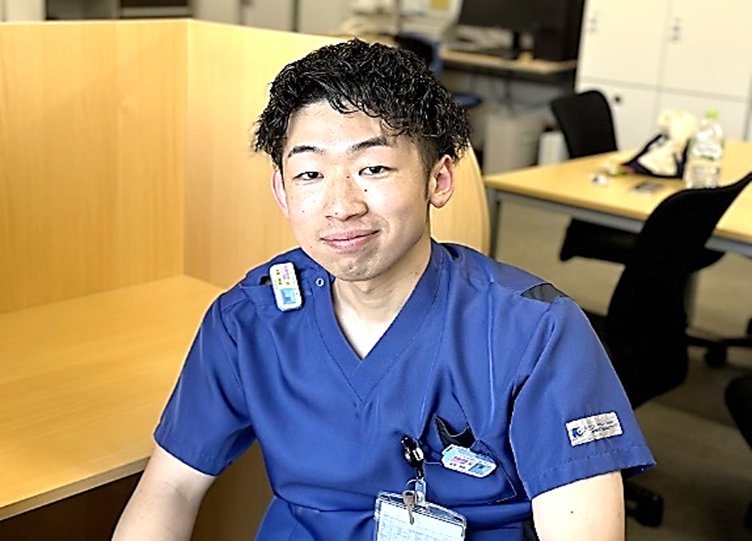
2nd year senior Ayumi Murata Engineer
During my first year, I spent a year training on each modality and was able to gain a lot of experience using the latest equipment and a wide variety of cases.
During my second year of general photography, I focused on mammography and obtained certification.
Through study sessions and case report meetings, I was able to acquire deeper knowledge and clinical experience over the course of two years. I am currently utilizing this experience in my daily work as a full-time employee.
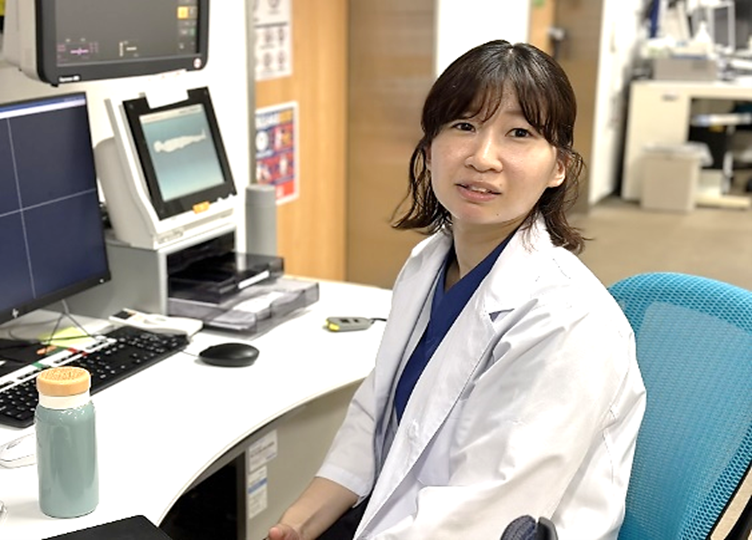
Q&A
A. There is no difference in welfare benefits. You can use a service called Benefit Station just like regular employees. As for the job description, residents do not have to do any chores and can concentrate on training according to the training program.
A. There is no holiday work or on-duty.
A. If you start working from April 1st, you will be granted 10 days of paid vacation on October 1st.
Recruitment information
Business content
The Radiological Technology employs more than 60 staff members, including radiological technologists and medical physicists. Utilizing advanced medical equipment, we provide advanced diagnostic imaging, treatment, IVR, and other support images, and are also involved in clinical trials and clinical research. In addition, our hospital, which has one of the leading emergency medical centers in Japan, carries out advanced medical care such as MRI examinations and IVR (angiography room, hybrid operating room, etc.) 24 hours a day, from the mission of being "the last stronghold of Kobe City". I'm here. Medicine is progressing day by day. Based on the basics of medical safety, team medical care, and patient service improvement, I would like you to have a sense of responsibility and cooperativeness as a medical professional, not be satisfied with the current situation, and study to improve your knowledge and technical skills. We also have a large number of staff with professional qualifications.
education system
We have implemented a preceptor system from the first year to the third year of employment. In the first year, we will start by acquiring the attitude and basic skills as a member of society, and we will develop human resources who have acquired the basics as a medical profession, such as judgment and communication skills. Self-improvement is the basics, but please rest assured that we will support you as much as possible! We also hold regular training sessions within the Radiological Technology. In addition, we have set up a partial support system for participation in academic societies and training sessions outside the hospital and acquisition of specialist engineers, so we hope that you can use it to improve your career and skills.
Working environment
The Radiological Technology is relatively young, so I can easily ask questions, and I think it is an environment where it is easy to exchange opinions with superiors and seniors. Male engineers can also take childcare leave based on the Childcare and Family Care Leave Act. Kobe has many sightseeing spots and gourmet such as Rokkosan and Arima Onsen in the north, Harborland and Meriken Park in the south, Ijinkan and Nankinmachi, Kobe beef and Kobe sweets in the center. Due to the current corona crisis, we have no choice but to refrain from visiting, but if you have the chance, why not visit us? I'm sure it will be a good refresher.
message from senior
With the preceptor system, you can receive guidance from seniors in a one-on-one relationship. Together with me, I come up with a plan to achieve goals based on the clinical ladder. It is a safe working environment where it is easy to ask questions even when there is a problem with the work content. In addition, you can learn from your senior colleagues about the way of thinking about working as a member of society, which will help you grow mentally. Let's work together at this hospital where you can grow more than just learning imaging techniques! (Female engineer: 1st year with the company)
This will be my 3rd year on the job. After on-duty training in the first year, I went through angiography and general radiography in a departmental rotation, and now belong to the CT department. From the second year onwards, I am also engaged in duty work two or three times a month.
In my third year, as part of the initial training program, I not only received guidance from my seniors as a preceptor, but I was also in charge of the first year's preceptor. While teaching, I often realized my own lack of knowledge, and it was also an opportunity to learn new things about myself, such as how to communicate and develop human resources.
There are times when I am busy with daily work, but there are many seniors who are close to my age, and they teach me carefully, and it is an environment where I can easily talk about any problems. I feel that this is a workplace where I can grow significantly as a radiological technologist. (Female engineer: 3rd year with the company)











